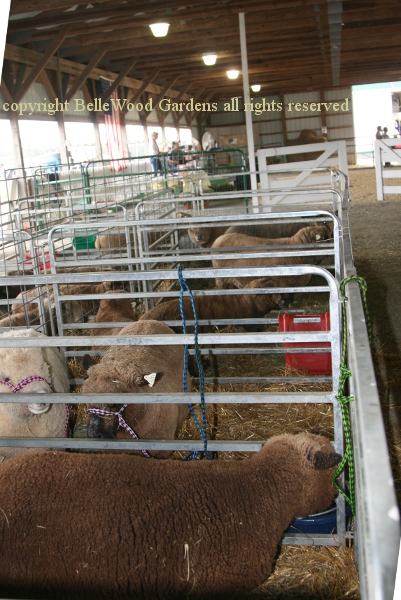
.
If you have any comments, observations, or questions about what you read here, remember you can always Contact Me
All content included on this site such as text, graphics and images is protected by U.S and international copyright law.
The compilation of all content on this site is the exclusive property of the site copyright holder.
It's the weekend of the Garden State Sheep Breeders Association Sheep and Fiber Festival, their 21st, at the Hunterdon County Fairgrounds. Sheep shows, of course, including breed specific National Gotland and National Navajo Churro Shows, also Regional Jacob and Regional Shetland Shows. Sheep shearing and border collie sheep herding demonstrations, spinning demonstrations, knitting and crocheting demonstrations. There's a judging of fleeces, and fleeces for sale. A parade of breeds, a shepherd's lead, and more. Over 90 vendors selling fleeces and roving. And yarns, everything from natural colors, even breed specific, to dyed in every color of the rainbow. Four huge show barns for the sheep (plus a couple of alpacas) and a show ring and all the vendors. Lots to see and do.

Pen after pen of sheep, several to a pen, with signs identifying breed and home farm.
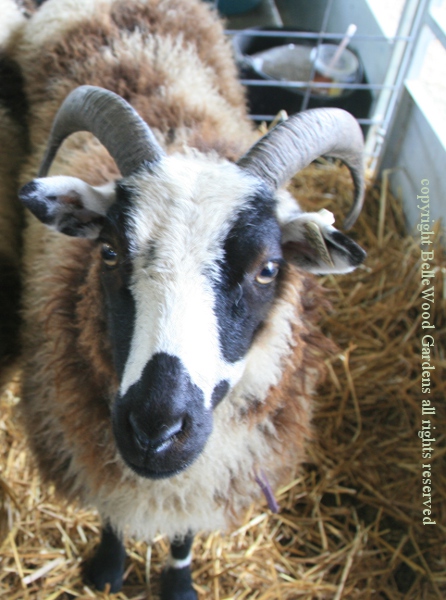
The weekend's event features the Northeast Regional Jacob Sheep Show. They're a spotted breed, with two, four, or even six horns. Four is most common. Considered an heirloom breed, one that has not been "improved" by cross-breeding, the first mention of Jacob sheep traces back to the 1600s.
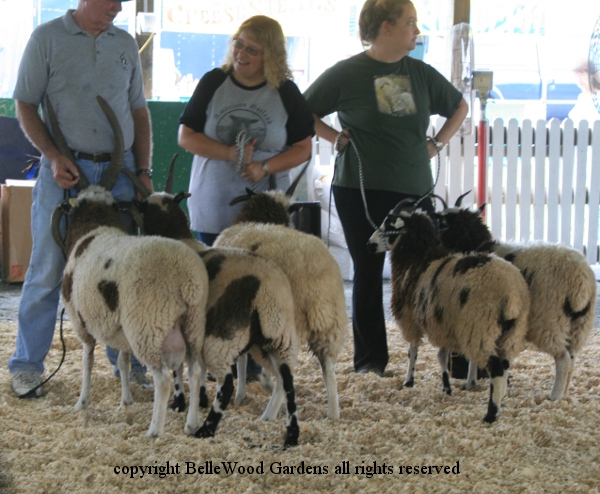
There are a large number of classes, everything from aged rams (2 to 4 years old) to yearling rams to ram lambs; aged ewes (2 to 8 years old), a pair of yearling ewes, ewe lambs, a pair of ewe lambs. Interesting to me are classes like get of sire, which requires 4 sheep of any age or sex sired by the same ram. For ewes it is dam and lamb, 1 lamb either sex with its mother. And the most intricate one - to me - is the breeder's flock which consists of 2 yearling ewes, 2 ewe lambs, and 1 ram any age, all bred and owned by the exhibitor.
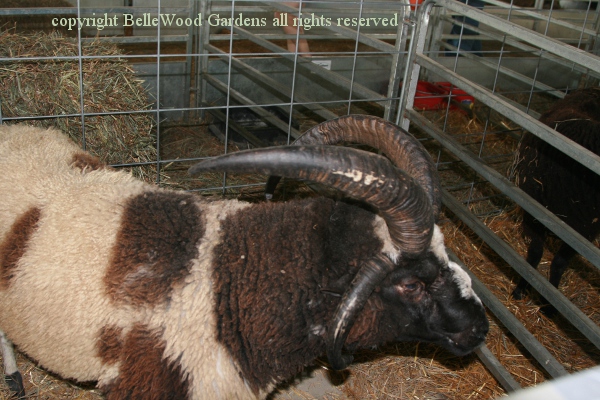
Here's the Jacob ram that was judged to be the grand champion.
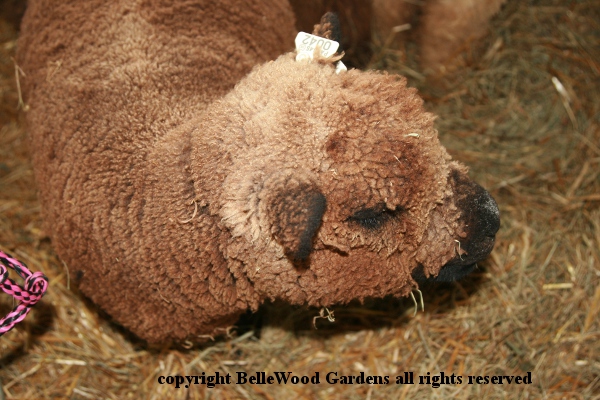
The baby doll sheep looks very fairy tale-ish by comparison.
As an exhibitor was cleaning the fleece on one of her Shetland sheep (naughty wether had gotten some small green weed seeds stuck to his coat) one of the show visitors asked if coyotes are a problem. Seems he wants to maybe keep a few sheep to "mow" the grass and maybe for meat. I walked away thinking to myself that it is not as simple as he might think. The particular sheep in the pen he was near, I happen to know, are handled regularly. To thoroughly prepare for showing they are walked for a few minutes every day, with a halter and lead. Sheep that are not regularly handled and familiarized with people can be wild as the wind. Moreover, most people are likely to think of "sheep" as a sort of generic creature, unaware that there are many different breed of sheep: meat sheep, wool sheep, hair sheep (they shed) and dual purpose breeds. Don't know of any specifically for cutting grass. It isn't as easy as turning them out in a field and hope the coyotes don't get them.
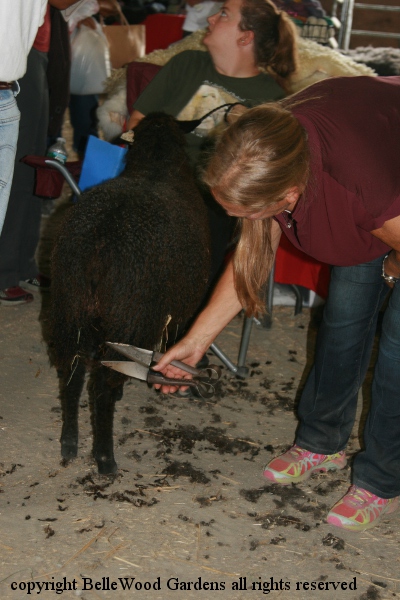
Sheep shears. I have a pair. They're great for garden use. One of the exhibitors is using a pair to give her sheep the final touch for the show ring, tidying up its coat for a nice, even appearance. Sheep used to be sheared by hand. Nowadays, electric clippers are definitely preferred.
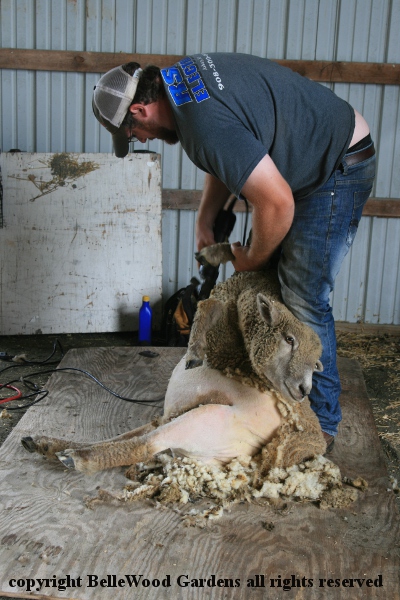
This sheep is getting a show clip. That's different
from an annual shearing to remove the fleece.
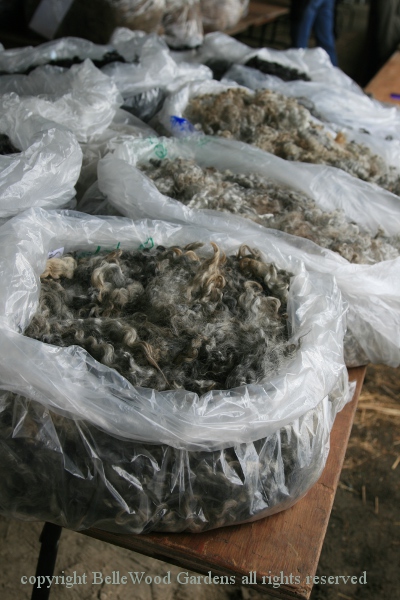
These bags of fleece have been entered in competition. It's a speciality all on its own, judging fleece. Can be commercial, can be breed specific, can be for hand spinners. How clean is the fleece, what's the crimp, and all sorts of arcane details. These bags almost have me humming
"Baa baa black sheep, have you any wool?
Yes sir, yes sir, three bags full.
One for my master, one for my dame,
and one for the little boy who lives down the lane."
Perhaps in a nursery rhyme, but I doubt any sheep gives three bags full. Except that long lost Australian merino. But his 40 kilo fleece was matted, filthy and nasty, useless as wool.
He's going slowly here, taking his time to get the best results.
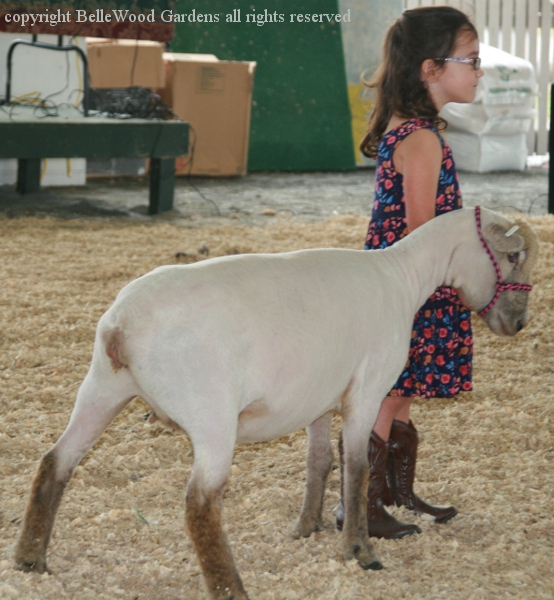
After all, it is his niece who will be taking the sheep into the show ring for the junior handlers event. Good looking sheep - and very well behaved too. Clearly this young shepherdess works with her sheep on a regular basis. And they both deserve the first place ribbon the pair was awarded.
And then it is time for the sheep herding demonstration.
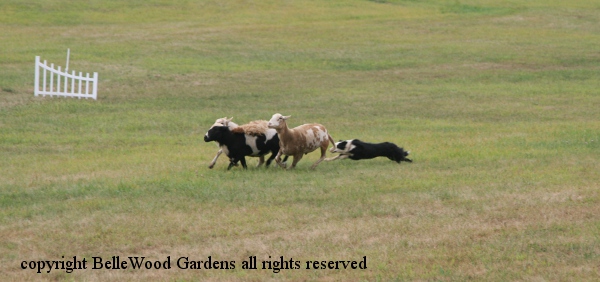
Here's Dilys, doing what she loves. The handler said that if she compared her dogs
to cars then Dilys would be a Jeep - go anywhere, handle anything.
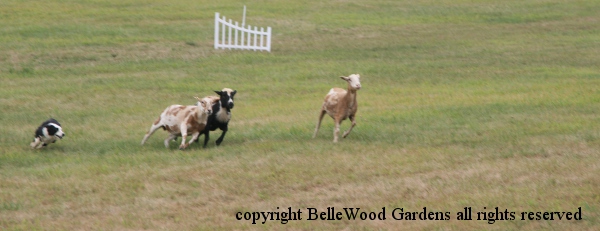
.
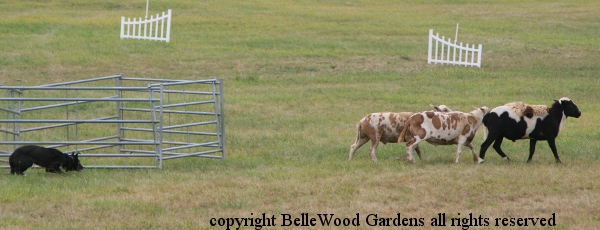
Jet, on the other hand, is like a Ferrari. Fast and very competitive.
She has "the eye," that focused gaze that helps maneuver the sheep.
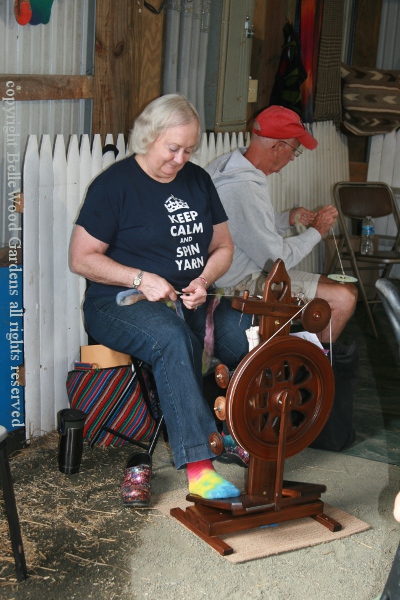
Something to see wherever I turn. This corner, a woman with a spinning wheel,
a man with a drop spindle. Another two, with spinning wheel and drop spindle.
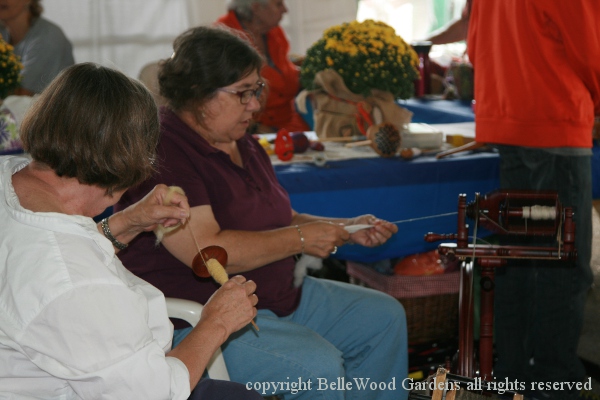
Everyone is willing to answer questions (even though there must be repetitions of both questions and answers.) Questions about sheep, about spinning. Knitting and crocheting demonstrations. Even a small table loom setup, with children welcome to throw the shuttle through the warp threads and use the beater to tighten the weft. A fascinating look at sheep, their fleece, and fiber.
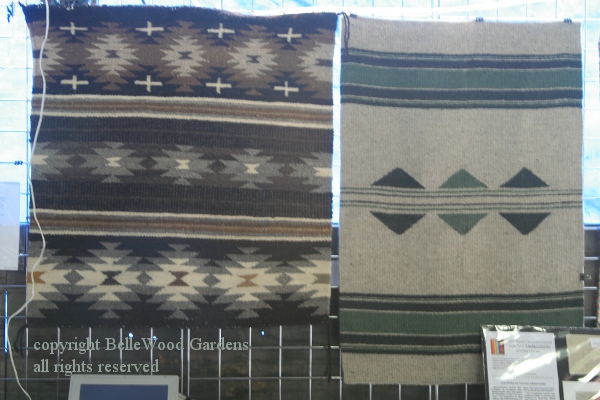
Two beautiful small rugs, woven from Navajo Churro wool. The accompanying information sheet gives that information, as well as color descriptions - what's natural, what's dyed, what dye was used. It's a fun filled learning day. Hope the sheep in their pens also liked the passing parade of show visitors.
Back to Top
Back to September 2015
Back to the main Diary Page